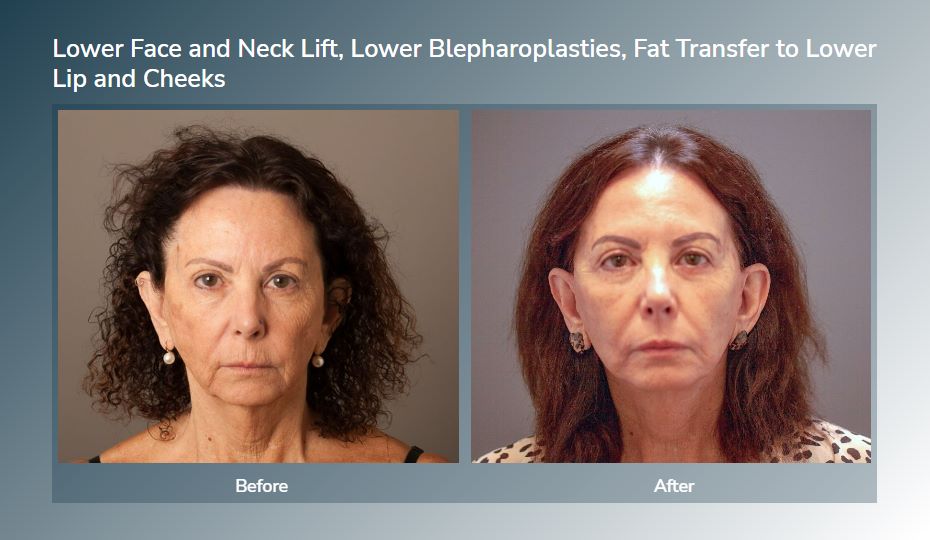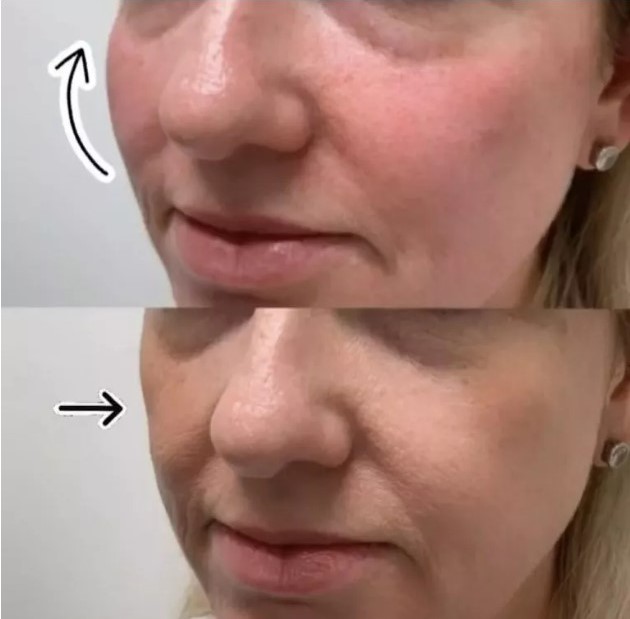Key Takeaways
- Thin cheeks can be caused by ageing, genetics, extreme weight loss, and various medical conditions.
- Facial fat transfer is a surgical option for increasing cheek volume, involving fat extraction and injection into the cheeks.
- Dermal volumisers are non-surgical treatments that use hyaluronic acid to enhance cheek volume with minimal downtime.
- Maintaining skin hydration, a healthy diet, and regular exercise can naturally support skin firmness and collagen production.
- Consulting with a qualified professional, like Dr. Doyle, is crucial for selecting the appropriate treatment for thin cheeks.
Thin cheeks or indented cheeks are when there is a noticeable dip between your cheekbones and jawbone, indicating that the area has limited fat. Decreased cheek volume can be caused naturally by ageing, genetics, face fat loss or specific medical conditions. A loss of facial fullness can affect anyone, as it depends on both one’s bone structure and their level of facial fat. To increase cheek volume, there are several treatments you can try such as facial fat transfer.
What Causes Cheek Fat Loss?
Let’s discuss some of the causes of thin cheeks. Ageing is inevitable, and as we age our facial skin begins to lose collagen and elasticity, resulting in a less fuller appearance. Additionally, genetics can play a factor. Other conditions that can cause the cheeks to look indented include extreme weight loss or medical conditions.
Natural Aging Process – As we age, collagen production decreases, the skin becomes less elastic and cheeks begin to sit lower as the fat in the face can migrate lower. This can leave an indented effect beneath the cheekbones.
Genetics – Your natural bone structure can lead to thinner cheeks, as the fat beneath your skin gets distributed differently based on the structure of your bones.
Weight Loss – Excessive weight loss can cause face fat loss which can then cause a more slender cheek. It’s important you determine the cause of the weight loss as it may be due to a medical condition.
Medical Conditions – Anaemia, Crohn’s Disease, Hyperthyroidism and many more conditions can cause weight loss which may result in lower or thinner cheeks. These conditions can impact other areas of your health, so seek advice from a qualified professional.
Certain Medications – Some medications may cause weight loss causing low-set cheeks. Ensure you review all of the side effects of new medications.
Indented Cheek Symptoms
As you get older, cheek fat can actually be beneficial since it adds volume to the face. When this fat starts to diminish, however, cheekbones may become more visible – and you’ll notice a dip between your jawline and cheek area. But what are some other symptoms of thin cheeks that you may experience?
- Indented cheeks, or flat cheeks
- Shadows under the eyes
- A stretched or thin appearance of the skin
- Loss of volume in the cheek area
- Cheek lines or creases
Solutions to Thin Cheeks
Now that you know what causes thin cheeks, let’s discuss how you can address this. There are a variety of treatment options to deal with thin cheeks to increase cheek volume. You may opt for a non-surgical option that generally offers instant results, with little downtime and results lasting for approximately a year. There are also more permanent surgical options.
Facial Fat Transfer
Are you looking for a surgical treatment to increase the volume in your face? If so, facial fat transfer may be suitable for you. This process involves extracting fat from other areas of the body using liposuction. The collected fat is then injected into sunken cheeks or other areas on your face that require more volume. Facial fat grafting can increase face volume with minimal scarring.
Facial fat transfer is an option to increase facial volume and reduce the appearance of lines. It can be used in areas such as the cheeks, under eyes, and nasolabial folds. To experience a more firmer result, it can be combined with other procedures like a facelift.
Facial Fat Transfer Recovery

Your recovery may take anywhere between two to six weeks. Despite being a minimally invasive surgical procedure, there are still certain risks associated with facial fat transfer. Infection, bleeding, bruising and asymmetry can occur as with any surgery – please note, that they remain rare occurrences. Nevertheless, rest assured that Dr Doyle will thoroughly go over all potential risks and factors to consider during your consultation beforehand so you can make an informed decision.
Cheek Volumiser for Hollow Cheeks

Dermal volumiser is a non-surgical treatment to treat the appearance of thin cheeks. Volumiser for indented cheeks is inserted to lift and increase volume. Hyaluronic acid is the active ingredient in cheek volumiser which closely resembles the substances that occur naturally in your body. The cheek volumiser is inserted into the indented areas of your cheekbones to increase volume.
Cheek Volumisers Recovery
After receiving volumiser for thin cheeks, it is expected that you may experience some temporary bruising and swelling. But rest assured, this is only a minor after-effect that will pass typically within a few days. Volumisers are considered low risk with minimal risk of allergic reaction to hyaluronic acid. That said, there is a chance for risk of asymmetry. Your nurse injector will make sure to thoroughly explain all risks during your consultation.
Combination Solutions
Taking good care of your skin and keeping it hydrated can help your skin appear more plump. There are a few lifestyle choices we recommend that will enhance your cheekbones when combined with the mentioned procedures.
Skin Care
For optimal skin health, we strongly encourage you to stick with hydrating skincare routines. Make use of products like serums and moisturisers that enrich your skin, as well as wear broad-spectrum sunscreen – especially if you live on the Gold Coast where the sun’s rays can be particularly strong! Lastly, stay hydrated by drinking plenty of water throughout the day and night.
Exercise Routine
Your exercise and diet are always important factors to your health and skin health. Maintaining a healthy diet and exercise routine can assist with producing natural collagen to support the structure of your skin. Exercise brings essential nutrients, such as vitamins and oxygen, to your skin cells which helps them heal and strengthen. High-Intensity Interval Training (HIIT) and resistance workouts are optimal for collagen production in the gym since they activate human growth hormone levels.
Diet
Incorporating antioxidant-rich foods, such as berries and dark leafy greens, into your diet can help protect your skin cells from damage and premature ageing. Additionally, adding fish like salmon or tuna to your meals is a great way of reducing inflammation due to their high levels of omega-3 fatty acids.
Facial Massage Techniques
Regular facial massages can increase blood flow in your skin and support its natural collagen production. The collagen protein is essential for providing structure and firmness in your skin which can prevent lines. You can incorporate the massage into your skincare routine with moisturisers or serums. Massaging your face with upward, lifting movements using your fingers is recommended.
Choosing the Right Solution for Thin Cheeks
When selecting a cheek treatment, it’s important to determine which option is best suited for your surgical and non-surgical goals as there are many factors to consider. You should consult with Dr Doyle who can review the various solutions for thin cheeks and assess what will likely provide you with the best results. It’s also important that you consider maintaining the results of each option, as some options are more permanent, however, volumisers for cheeks will need to be maintained.
FAQs
How Long Do the Results of Treatment Last?
With volumiser for cheeks, the results can last approximately one year and then will need to be maintained. Every person is different and some may notice their volumiser wears off more quickly if they have a fast metabolism or exercise regularly.
Facial fat transfer results are generally considered permanent. However, the ageing process will of course continue so the results may seem to diminish over long periods of time. You can generally expect to enjoy your results for many years.
Is There Any Recovery Time Required After Treatment?
Facial fat transfer is a day surgery procedure with a recovery period. Scarring and pain should be minimal, while swelling may take anywhere from two to six weeks before it completely heals. After about a week, you can likely resume your normal activities.
Volumiser for cheeks is non-surgical and generally considered minimally invasive. After receiving treatment to the cheeks, mild bruising and swelling are typical side effects. To ensure proper healing and results, it is essential that you wait for 24 to 48 hours before exercising again.
As always after treatment, you should take time to rest and give your body time to recover. You should also ensure that you follow all instructions for post-treatment recovery. We recommend consulting with Dr Doyle in order to learn more about these risks before going ahead with any treatments.
Next Steps
There is an array of treatment options for thin cheeks so you should be able to find a suitable solution for yourself. Schedule an appointment with Dr Doyle to explore the best possible option available specifically tailored just for you.
About Dr Mark Doyle FRACS (Plas) – Queensland Plastic Surgeon
Servicing patients in Gold Coast, Brisbane, Sunshine Coast, Cairns and New South Wales NSW – Northern Rivers, Byron Bay, Ballina, Lismore and more.
Dr Mark Doyle is a fully qualified Specialist Plastic Surgeon with over 30 years of experience performing breast, body, face and nose surgery. He has completed all required training and only carries out approved surgical practices. There are NO undertrained doctors or cosmetic doctors acting as surgeons at Gold Coast Plastic Surgery.

